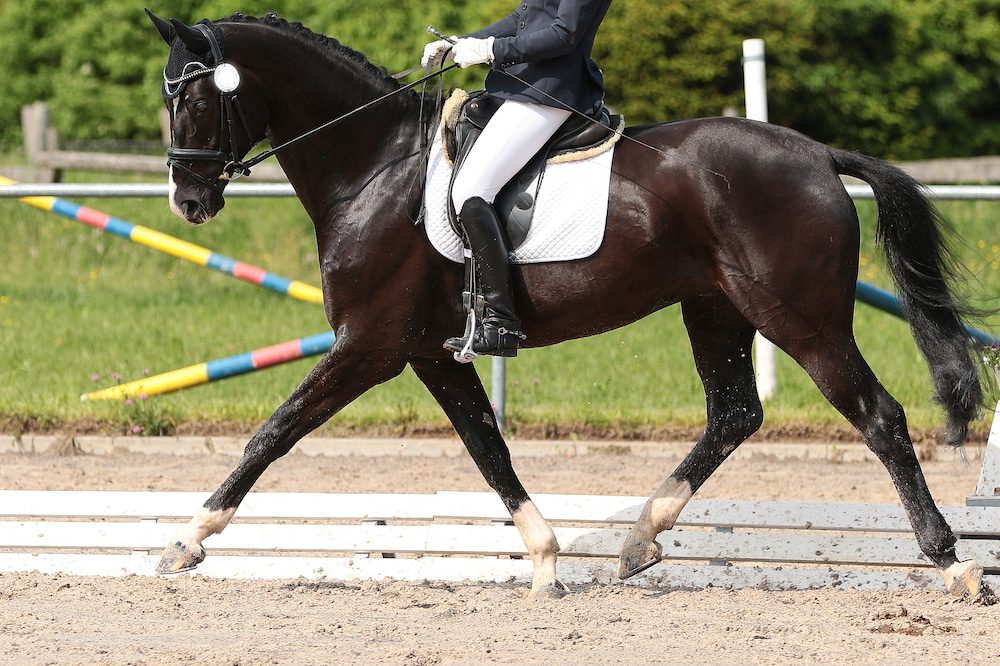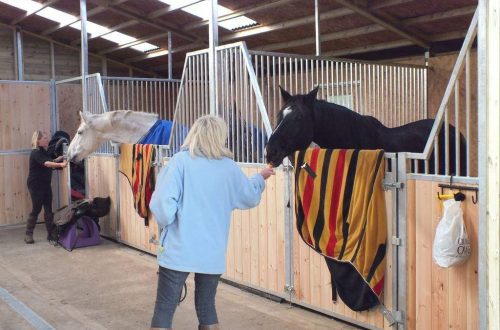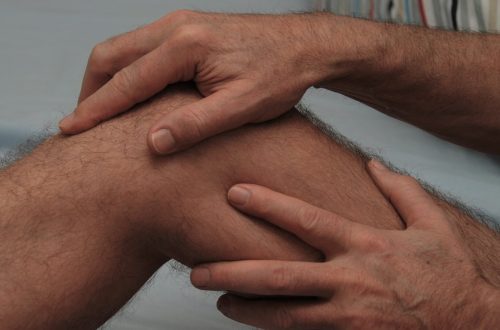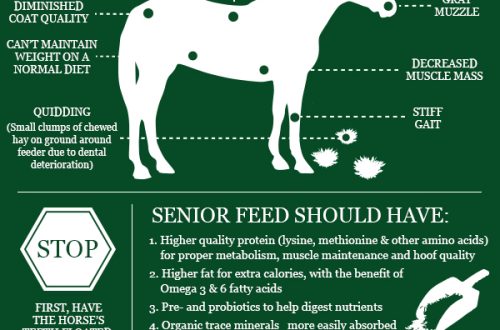
Training trot: on the way to perfection!
Training trot: on the way to perfection!
Are you kicked out of the saddle and bouncing when you try to trot? If so, then you have many friends in misfortune – perhaps every rider has encountered this problem. But learning to sit properly at the training trot is a critical skill, and here’s why:
1. It allows you to stay in tune with your horse’s gait dynamics.
2. It allows you to be above the center of gravity, making it easier for the horse to carry you. When you bounce off the saddle, your constantly shifting weight will unbalance the horse and prevent it from moving correctly while maintaining the correct frame.
3. It enhances your ability to properly influence your horse with the controls and to influence him in a positive and effective way.
4. This skill allows you to progress. If you can’t sit at the training trot, you will be permanently “stuck” at the first level of training.
Why are you bouncing off the saddle?
You bounce because you don’t match the up and down phases of your horse’s back. When she takes the first step of the trot, her back rises and lifts you with her; at this point it’s still fine. But the trouble starts as soon as the horse’s back starts to go down: you can’t keep up with it, so the horse’s back starts moving back up before you have finished moving down. The saddle hits your seat and pushes it up, even higher, and you start down again later (and slower). Then you bump into the saddle againon the halfway, maybe even earlier) and it pushes you even higher. In two or three steps of the trot, you begin to bounce randomly on the back of the horse.
To break this vicious cycle, you can match your movements with the phases of your horse’s movements, learning to go down as fast as his back. When you can get down at the same time as the horse’s feet hit the ground, you’ll be ready to start climbing with him.
What does “fall faster” mean? Flex or close your hip joints more effectively!
If you think like most riders, you probably tend to think of the trot as an up and down movement, probably because of the bouncing in the saddle. But think about this: your thigh—your thighbone—is a straight bone with the hip joint at one end and the knee joint at the other. They work like hinges. Your knee joint stays in place on the saddle. So the only movement your hip can make is forward/up, back/down in an arc—like your knee is the center of the circle, your hip is the radius, and your pelvis is moving around the perimeter. This movement is forward/up, back/down and allows you to sit in a training trot: as your hips and knees extend (open) and flex (close), you move your hips in accordance with the movement of your horse.
Unfortunately, it’s not as easy as it looks…because of the bending. We humans have learned to solve most movement problems by using our strongest muscles by opening and stabilizing the hip joints in an extended position. In fact, this is the way we have learned to partly solve the problem of bouncing in the saddle at the training trot – to open or extend the angle of the hip and lean back behind the vertical. This is the most common decision I see when I am a dressage judge.
But this is a bad decision. It is not suitable for you because such a movement reduces your efficiency, stretches the ligaments around the spine, causes pain and can lead to chronic degenerative back problems. It is not suitable for your horse either, because it interferes with his balance and movement. And it interferes with your dressage work, because when you move like this, you lose control, communication, and efficiency, and you encourage the horse to stretch. (As a result, she begins to walk in front).
How to stop bouncing in the saddle?
I will help you learn not to bounce off the saddle at the training trot. We will work on some joint ‘flexion’ patterns that will allow you to close the hip joint faster and lower yourself down with the horse’s back. In the process, I think you’ll find that your overall posture has improved and you’ll even see how much better your horse is walking as well.
On the ground and in the saddle:
- You will find your balanced “neutral” spine position – the natural position and curve of the cervical, thoracic and lumbar regions while maintaining the correct balance. The neutral spine is very stable, and from here you can begin to flex the hip joint as easily and comfortably as you extend it.
- Ask yourself, “If my horse suddenly disappeared from under me, would I land on my feet without losing my balance?”
- You will begin to feel your hip joint flex and close as well as extend and open. You will begin to notice that your horse’s back movement at the trot is not “weeeeeee down, veeeeeee down” (a common misconception that only reinforces our pattern of work). Instead, the back moves “up, down, up, down, up, down.” Both aspects of movement are equivalent, and being aware of this will help you sit.
- You will try some great lunge exercises. When your horse is on the side reins, his back is in a more correct position and it is easier for you to sit on him. If you need to, secure yourself by the strap that is attached to the saddle – this will ensure safety and confidence. You will need a reliable horse and an assistant – a cord.
On the ground
Find your “neutral spine”
When you fall behind the vertical, your sitting bones move forward, and you usually remain in a “stretched” position. When you roll forward, your sitting bones move back and you remain in a “bent” position. Either position makes it difficult to move to another position when you need to move on. Being in a “neutral” position, you can access any position equally quickly. Neither forward nor behind the vertical is as stable as neutral, in which your sitting bones are pointing down and your shoulder, hip, and heel are aligned in the same vertical line.
To find a neutral position, sit on a hard, flat surface (such as a chair) as if you were on a horse. Place your feet flat on the ground, bend your knees and hips at a 90-degree angle. Ask an assistant to stand behind your back and forcefully push down on your shoulders. Make sure it presses straight down, not even a slight slant forward or backward. When he presses on his shoulders, try to move the curve of the spine a little, bend, arch a little – and try to feel how your spine “give”. When, all of a sudden, you find a position in which the spine does not “give in” to pressure, no matter how strong it is, know that you have found your neutral position. Remember this feeling so that you can bring it back and maintain it.
tone your torso
You need core tone for stability as you move your arms and legs. Feel the “tone” by growling “GRRRRRRRRR”. Feel how the muscles on the sides come into tone, even the muscles on the back are connected. Cough to get the same result. Now try to reproduce that feeling without growling, just by using your muscles.
Thigh tone
БоA big part of working on the training trot is knowing how to consciously engage the muscles that flex the hip. This is what causes your hip to rotate around your stationary knee instead of your knee crawling up and the leg going up and shortening – a common problem that many instructors try to fix by saying “drop your knee down”. But when you press down on your knee to force it down, you open up the angle of the hip joint and enter the “stretch” position (and force your horse to move forward).
Instead, try this: Sit in a hard chair again with your knees and hips bent at 90 degrees and your feet flat on the ground. Now imagine that you are raising your knee, but your foot is tied to the ground. Do you feel how your knee stays in place and at the same time how the tendons on its back side tighten and the muscles in front and outside of the thigh harden? This is a way to get your hip to function while keeping your knee and leg long.
In the saddle
Looking for a neutral position
During the stop, sit on the horse relaxed and straight, feel that your weight is evenly distributed, that you are not shifting or outweighing one or the other aside. Find your “neutral spine” where your sitting bones point straight down and maintain the stability you felt when your assistant pressed on your shoulders.
The old rule—shoulder, hip, and heel should be in the same vertical line—still holds true, but I’ve found that many riders can’t feel the correct position. So I always ask, “If your horse were to magically disappear from under you, would you land on your feet and remain standing in that position, or would you fall on your back or face down?” When you can answer, “I’ll land on my feet and stand,” that means you’re properly aligned.
Correcting the leg
The human leg has twelve muscles that grip and only two that release the grip. And grabbing is what gets in the way of a relaxed, efficient stance in many cases—because if you grab, you’re not letting gravity pull you down as fast as a horse’s back. Therefore, in order not to grab the sides of the horse, move your hip a couple of centimeters from the saddle; then let it relax again so that it settles quietly and softly into place. Instead of forcibly pushing your heel down and stepping on the stirrup (which will only help you bounce even higher from the saddle), try to let the heel itself drop under the weight, lift the toe up. Let the foot take a natural relaxed position, do not twist the ankle.
Reorganizing the torso
Place your hands on your shoulders and lift your elbows up and out to the sides, to shoulder height. Feel how your shoulder blades come together and lower. Feel your chest move forward and down, allowing you to put more weight on your hips and increase the vertical dynamics of your upper body so you can lower yourself down faster. Finally, place your arms and hands in riding position, reach your shoulders and elbows down and slightly forward, as if pushing your hands towards your horse’s lips. (Another way to experience this feeling is to tie the sweater around your pelvis, below waist level. Then, keeping your elbows down, pull the sweater sleeves forward, keeping your spine neutral and pulling the back of your waist strongly forward.)
We feel in motion
Align your body and take the correct position in the saddle. Then, lunge or on your own, begin to move at a posting trot. Lifting your toes up (instead of forcefully lowering your heels), locking your knees but not pinching your horse’s sides, notice how your hip turns around your knee, as if you were kneeling on the ground. Feel how your knee and hip joints open and close in relationship. As you rise, notice the forward and upward movement of your hip as it unbends, opens, and goes almost to the pommel. When you sit down, pay attention to the movement of your hip. back and down as it flexes, closes and gently returns you to the saddle.
Which aspect predominates – up / down or forward / backward? If you belong to the majority of riders, you will feel that these aspects are almost equal. But even if not, you must realize that the facilitated trot is not just about opening and closing the knee joint, but about getting up and down in the stirrups. This is a pendulum movement along the arch of your hip that opens and closes your hip joint.
Return to the walk and notice that even now the hip is moving back and forth as your horse moves.
Do your hips move evenly in both directions, or do they move more forward than backward? Can you feel through your thigh the moment your knee goes down a little and then back into place? Can you emphasize this movement – so that it is not your horse and saddle that move your body, but you follow the movements of the horse, rhythmically flexing and extending the hip? Can you flex and extend your hip even more? See if you can get the horse to follow your movement and lengthen the stride. Good job!
Sandy Howard (source); translation by Valeria Smirnova.





